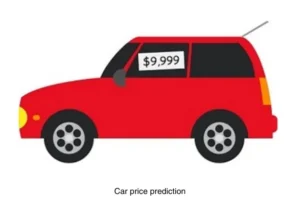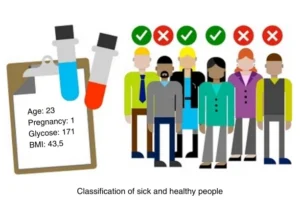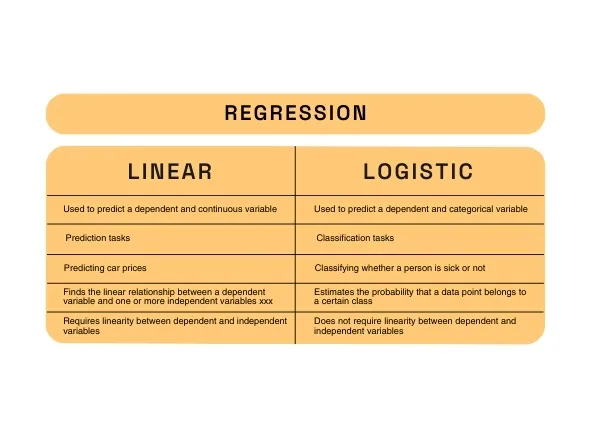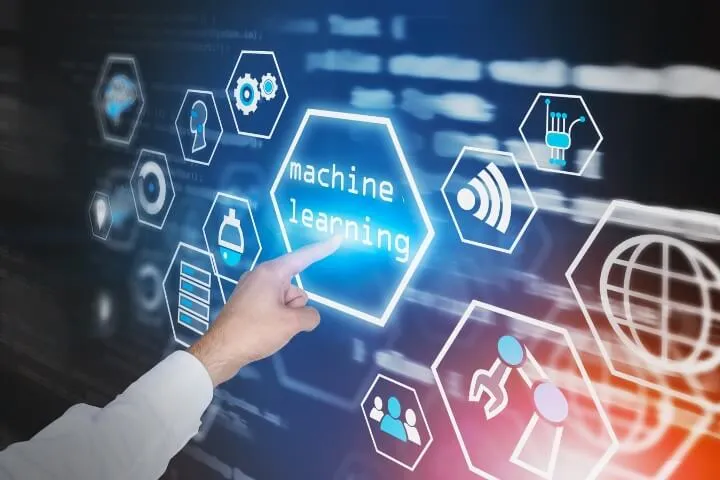Linear Regression and Logistic Regression are classical Machine Learning algorithms. It is a mistake to think these two algorithms are identical and can be applied to the same tasks despite their similar names.
In this article you will understand what linear and logistic regression are, their main differences and applications.
The basics of Machine Learning
ML is a subfield of Artificial Intelligence that enables algorithms to learn from examples (data) and generate a mathematical/statistical model without being explicitly programmed by a human. This characteristic leads to the saying “Machine Learning is a technology that builds itself” (Domingos, 2017).
Machine Learning algorithms can be used for predictions, classifications, segmentations and dimensionality reduction automatically without human intervention.
There are numerous algorithms each with its strengths and weaknesses. Linear Regression and Logistic Regression are examples of such algorithms and despite their similar names they are not the same.
Traditional Programming vs. Machine Learning
- In traditional programming the development of software requires explicit programming of a set of defined rules to achieve the desired output and is done by a human (programmer).
- ML algorithms on the other hand learn automatically from data and generate rules or models based on this learning.


Types of Machine Learning
Before explaining Linear Regression and Logistic Regression algorithms it’s necessary to understand the types of ML and their respective tasks and applications.
They are defined based on their application, complexity and the type of data they can learn from, among other characteristics. Technical literature typically divides Machine Learning into three types of learning as described below:
- Supervised Learning
- Unsupervised Learning
- Reinforcement Learning
Supervised Learning
In this type algorithms are trained using labeled data meaning the algorithm knows the correct output for a given input variable in the training set. This type of learning can be applied to regression and classification tasks.
Regression studies the relationships between continuous numerical variables and is used in various forecasting applications such as car price prediction and sales estimation. Linear Regression is one of the most popular regression algorithms.
Classification aims to indicate to which class an object or data belongs and can be used to classify whether a patient has a certain disease or not, customer retention (churn rate), etc. Logistic Regression is an example of an algorithm that can be applied to classification.
Unsupervised Learning
In this one algorithms are trained using unlabeled data meaning there are no previously known answers to base the analysis on. The model must discover patterns on its own.
One of the significant advantages of unsupervised learning is precisely the discovery of unknown patterns and the synthesis of a large volume of data. This type of learning can be applied to clustering, association, and summarization tasks.
Reinforcement Learning
It is based on feedback from previous interactions. This type of learning continuously improves its model. It uses the concept of reward and punishment. A reward is given for a correct action and a punishment for an incorrect one. It is widely used in models that learn from games (Backgammon, Chess, Go) and robot navigation.
Some literature also mentions a fourth type of learning which is semi-supervised learning, referring to the use of both labeled and unlabeled data.
Linear Regression
Linear Regression is considered one of the simplest and most widely used Machine Learning algorithms. A classic example of Linear Regression is car price prediction.
The Linear Regression algorithm models the relationship between a dependent variable y (car prices) and one or more independent variables x (size, number of doors, engine power, CO2 emission, etc.) The algorithm then uses this model to make predictions on new data.
Linear Regression is popular because it is simple to understand and implement. It is also computationally efficient and scalable. However this algorithm may fail with more complex datasets.


Logistic Regression
Logistic Regression is a type of statistical model used for classification tasks. The Logistic Regression algorithm models the relationship between a dependent variable y (the label) and one or more independent variables x (the features).
The algorithm then uses this model to make classifications on new data points. The classifications made by the Logistic Regression algorithm are probabilities that a data point belongs to a specific class. “Logistic” refers to the Logit function which is used to map probabilities between 0 and 1.


Linear Regression vs. Logistic Regression
Here is a summary of the main differences and applications of Linear Regression and Logistic Regression algorithms:


While Linear Regression and Logistic Regression share similar nomenclature and foundational principles in Machine Learning, they serve distinct purposes and are applied to different types of problems.
At Loxias we leverage these algorithms to develop solutions that generate efficiency and insights for businesses across various industries. Learn more here!


